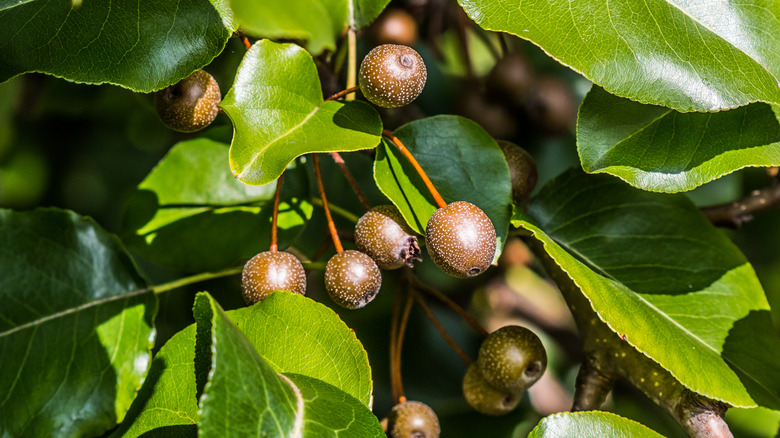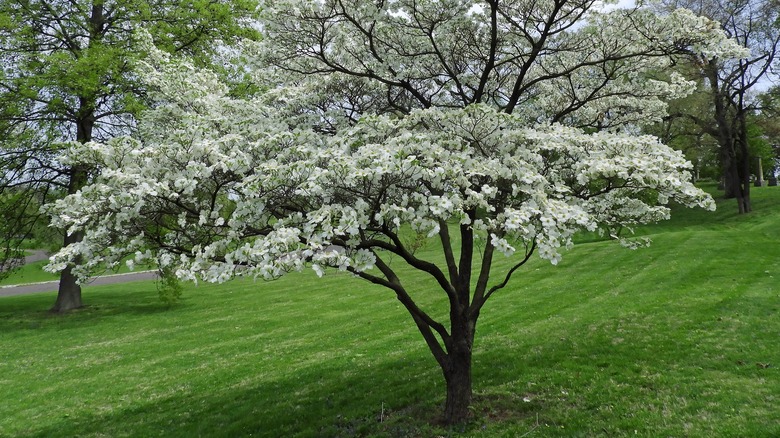Cleaning
Tiffany Selvey
Native to Asia, the controversial Bradford pear tree (Pyrus calleryana ‘Bradford’) is beloved by some for its beautiful spring blooms, but it’s quite unpopular with others, as those beautiful blooms are actually quite smelly. And there are many reasons to dislike the Bradford pear, as this tree is not only stinky, but it is also considered invasive in many states, overtaking and out-competing native plants. In fact, this tree has become such a problem that the sale of it is already being banned in Pennsylvania, South Carolina, and Ohio, with more states likely to come in the next few years.
In spite of its invasiveness, the Bradford pear tree remains a favorite among landscapers and real estate developers. The family of Callery pear trees that it belongs to is exceptionally fast-growing and attractive. But don’t let yourself be fooled by this tree’s external beauty, as it comes with a multitude of problems.
Problems with Bradford pears

Sherry V Smith/Shutterstock
As if producing weeks-long stinky blooms is not enough cause to avoid planting a Bradford pear tree, there are plenty of other reasons to opt for something else. At the top of this list is its invasive nature. Although they were originally bred to be sterile, Bradford pears can now cross-pollinate with other trees in their family, producing viable fruit containing seeds. This fruit is then eaten by birds, who deposit the seeds anywhere they fly. This is why otherwise-untouched fields and roadside ditches can become overrun with Bradford pears. Did we mention it has thorns up to 2 inches long? These thorns make the removal of this invasive species even more challenging.
Bradford pears are often planted because they grow so quickly, but that speedy growth comes with a price. The lifespan of these trees is quite short compared to many native alternatives, as they only survive about 15 years. The speed with which they grow also leads to weak limbs that are easily damaged during storms, leaving the tree susceptible to disease. If you have a Bradford pear in your own yard, sooner or later, it’s going to need to be removed. Now is a great time to cut it down and replace it with something better.
What to plant instead of a Bradford pear

Nina B/Shutterstock
Now that we have (hopefully) talked you out of planting a Bradford pear tree, here’s what you can plant instead. Many native trees offer beautiful blooms while supporting the ecosystem far better than a Bradford pear could. If you’re looking for a colorful option to add to your landscape, the Eastern redbud (Cercis canadensis) puts on a stunning show of tiny reddish-purple blooms in early spring before filling out with heart-shaped leaves through fall. If you have your heart set on white blooms, serviceberry (Amelanchier arborea) offers beautiful flowers in the spring followed by an edible fruit that is similar to blueberries. Depending on the cultivars available in your region, serviceberry bushes and trees grow from 4 to 25 feet tall.
If you live in an area that gets regular rainfall, it’s hard to beat a spring-blooming dogwood tree (Cornus florida) for its picture-perfect beauty. There are many cultivars of dogwood trees that offer blooms in a range of colors including pink, red, and white. Some varieties can even add winter interest to your landscape with red, yellow, or coral-hued branches. Why choose a Bradford pear when there are so many more beautiful and long-lasting options?



